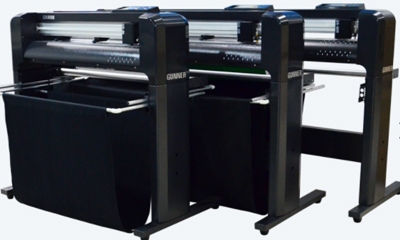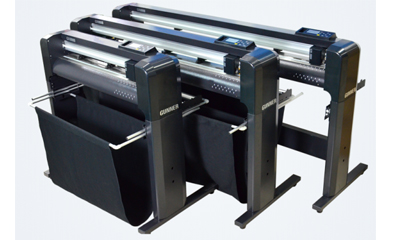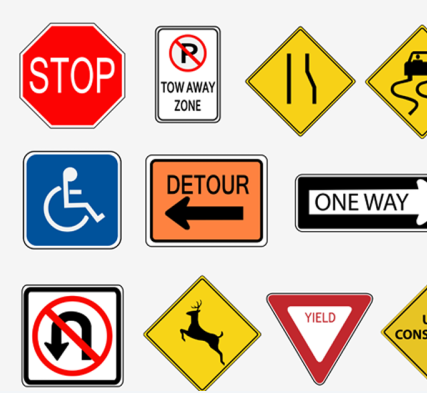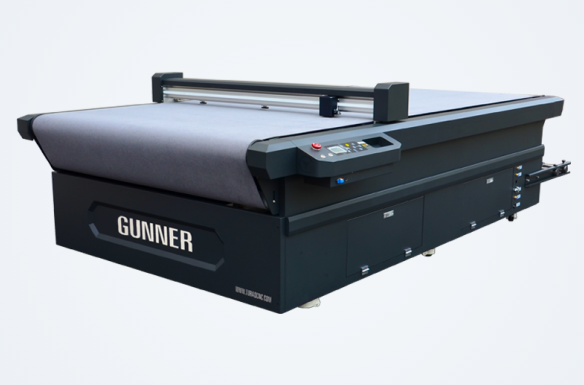The success and appeal of flatbed plotters have been on the rise in recent years. These cutters have many different features and are available in a wide range of formats.
Flatbed plotters are called "flatbed" because, in contrast to roller plotters, they use a beam to move the tool over the material, rather than allowing the material to move under the beam, and place the same material on a flat surface.
The main feature of these machines is that they allow the operator to cut multiple substrates without using a traditional die cutter. Thus, these machines process the raw material by giving it a defined shape. There can be precise shapes for different types of applications: depending on the capacity of each machine, the raw material can be turned into boxes, stickers, signs, or many other applications.
Vinyl Plotter
Flatbed plotters are distinguished mainly by the applications they can implement. The applications are decisive because they define the reference market for a single model.
Another essential element that helps to distinguish the type of plotter is the tools that can be installed on these machines. In fact, the tools are very important in determining the applications that a plotter can perform and how they can be performed.
People often mistakenly believe that size is the most important factor. To be honest, this is the last aspect we should consider when evaluating a plotter. First, we should make sure that the plotter is capable of handling the material we want to work with. The choice of machine size will be closely related to the size of the material to be handled and, if printing, to the capacity and maximum print size that can be achieved.
Another factor that determines the type of digital plotter is the software application. This is not because the machine does not have them, but because they are able to manage multiple file formats, which in a way will also determine the work that will be done.
If we receive a . DXF file, it is more likely that we are dealing with the world of material cutting and modeling. Finally, there are specific files from third-party programs that are not part of the machines on the market and may have proprietary formats.
Vinyl Plotter
Flatbed plotters: what materials they cut
Flatbed plotters can cut different types of materials. The workability of the material is closely related to the choice of tools with which the machine is equipped.
However, flatbed plotters are often used to work with soft materials such as paper, cardboard, adhesives, fabrics, foams and all those materials that have a low resistance to processing.
When we talk about these materials, we can distinguish between those that can be cut with a drag knife, an oscillating knife or a rotary knife.
In terms of hardness, the most difficult material to cut is PVC Forex®, which is the upper limit of what a flatbed plotter can process.
Usually, the flatbed plotter not only makes the cut, but in the case of boxes, a second tool is needed to make the crease, or in the case of adhesives, a half cut. materials more suited to the signage market such as Alu-dibond, high-density Forex®, Lexan or Plexiglas, MDF, etc. require an additional cutter.
As you may have guessed, there are many options and customization possibilities for each specific business need.




